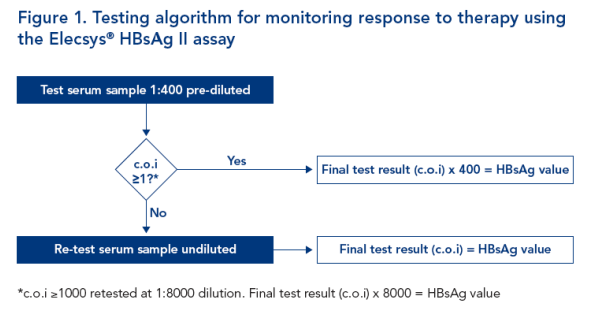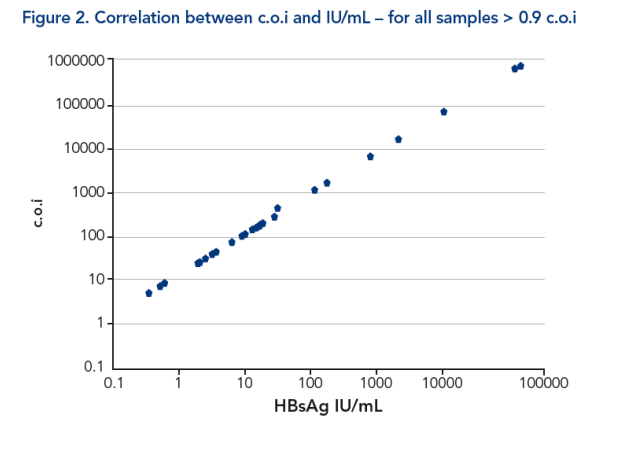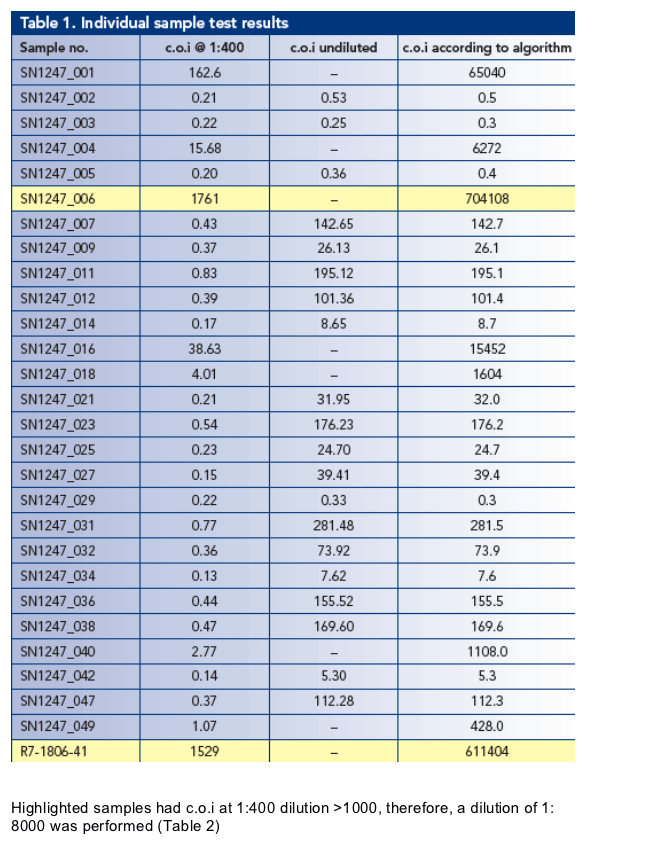 |
 |
 |
| |
Quantitative Assessment Of Serum HBsAg Levels Using The Elecsys HBsAg II Screening Assay: Results Of A Feasibility Study
|
| |
| |
Reported by Jules Levin
59th Annual Meeting of the American Association for the Study of Liver Diseases, October 31-November 4 2008, San Francisco, USA
F Bonino,1 B Ofenloch,2 W Melchior,2 B Upmeier,2 D Rößler,2 W van der Helm3
1National Institute of Translational Research, Ospedale Maggiore Policlinico Mangiagalli e Reginal Elena of Milan and University of Pisa, Italy; 2Roche Diagnostics GmbH, Penzberg, Germany; 3Roche Diagnostics Ltd, Rotkreuz, Switzerland
Background
Hepatitis B virus (HBV) surface antigen (HBsAg) is the first immunological marker to appear following infection with HBV and persists in the serum of patients with chronic HBV infection
Clearance of HBsAg represents the closest outcome to clinical cure making it an important goal of therapy
HBsAg levels are significantly reduced by treatment with peginterferon alfa-2a, but not by lamivudine or adefovir1,2
Recent data suggest that early on-treatment monitoring of HBsAg during peginterferon alfa-2a therapy in patients with HBeAg-positive or HBeAg-negative chronic hepatitis B may be useful for predicting response to therapy3,4
We hypothesized that the Elecsys HBsAg II assay (Roche Diagnostics), currently available as a qualitative assay for HBsAg, could be adapted for quantitative HBsAg determination using a simple algorithm
OBJECTIVE
To evaluate the feasibility of a simple algorithm for quantitation of serum HBsAg based on the Elecsys HBsAg II screening assay
It was assumed that by selection of appropriate dilutions, limitations of the measuring range could be overcome, thus allowing quantification of HBsAg in a suitable linear range
AUTHOR CONCLUSION
We have demonstrated that a simple dilution-based algorithm can be used with the qualitative Elecsys HBsAg II assay to quantify HBsAg in clinical samples
This assay format could be used to provide useful information during on-treatment monitoring of HBsAg levels in patients with chronic hepatitis B undergoing therapy
METHODS
A total of 28 patient serum samples were tested in the Elecsys HBsAg II assay at a dilution of 1:400 in serum negative for both HBsAg and anti-HBs
Samples yielding a cut-off index (c.o.i) of ≥1.0 were expressed as c.o.i x 400, while samples with a c.o.i. <1.0 were re-tested undiluted and expressed as the final c.o.i (Figure 1). Samples yielding values ≥1000 c.o.i were re-tested at a dilution of 1:8000 and the corresponding result was expressed as c.o.i. x 8000
Quantitative levels of HBsAg were obtained by reading the resulting c.o.i values from a master calibration curve, in which target values (IU/mL) were assigned from standard World Health Organisation material

RESULTS
All 28 samples yielded a test result with the algorithm
-- 20 gave a value of <1.0 c.o.i at 1:400 (approx. <25 IU/mL) and were re-tested undiluted
-- 2 samples gave a value of ≥1000 c.o.i and were re-tested at a dilution of 1:8000
-- 6 samples gave results ≥1 c.o.i <1000 c.o.i HBsAg levels in the 28 patient samples ranged from 0.25 - 764960 c.o.i, including Hook samples (Table 1 and 2)



A good correlation was observed between c.o.i and HBsAg concentration, which was linear over the entire range (5-6 logs) tested (Figure 2)
REFERENCES
1. Brunetto MR et al. Significant reduction of HBsAg in the sera of HBeAg-negative chronic hepatitis B patients treated with peginterferon alfa-2a alone or in combination with lamivudine. AASLD 2006 abstract. Hepatology 2006;44(Suppl 1):549A (abstract 970)
2. Hou J et al. Efficacy and safety of peginterferon alfa-2a versus adefovir dipivoxil (ADV) in treating lamivudine-resistant HBeAgpositive CHB: an interim analysis of a prospective randomized study. AASLD 2008 abstract, poster P978
3. Lau GKK et al. On-treatment HBsAg decline during peginterferon alfa-2a (40KD) ± lamivudine in patients with HBeAg-positive CHB as a potential predictor of durable off-treatment response. AASLD 2008 abstract, poster 910
4. Marcellin P et al. In patients with HBeAg-negative chronic hepatitis B HBsAg serum levels early during treatment with peginterferon alfa-2a predict HBsAg clearance 4 years post-treatment. AASLD 2008 abstract, poster 919
Disclosure Information
Editorial support for the development of this poster was funded by
Roche Diagnostics Ltd, Rotkreuz, Switzerland
|
| |
|
 |
 |
|
|